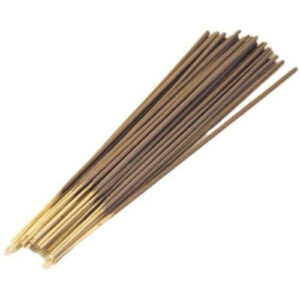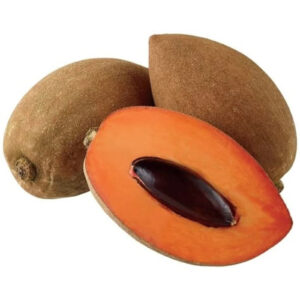🚀 Save Big on Bulk Shipments – Special Discounts Await!
Shop Now7 Essential Steps for Successful Exports from India – Ravconn Exports
7 Essential Steps for Successful Exports from India – Ravconn Exports, provides a structured roadmap for businesses venturing into international trade. Covering everything from regulatory compliance (IEC, DGFT) and product selection to buyer identification (B2B portals, trade fairs) and logistics (shipping, customs), it offers practical insights with real-world examples, comparison tables, and actionable tips. The post also highlights payment security, risk management, and how Ravconn Exports simplifies the entire export process—making it an invaluable resource for both new and experienced exporters looking to expand globally
1. Understanding India’s Export Regulations
Exporting from India requires compliance with government policies and trade laws. Key regulatory bodies include:
Key Authorities
Directorate General of Foreign Trade (DGFT) – Governs export-import policies.
Customs Department – Manages cross-border trade compliance.
Reserve Bank of India (RBI) – Regulates foreign exchange transactions
Steps to Ensure Compliance
- Obtain an Import-Export Code (IEC) – Mandatory for all exporters (apply via DGFT). DGFT Website
- Check Export Restrictions – Some goods (e.g., wildlife products) require special licenses.
- Follow FEMA Guidelines – Ensure smooth foreign currency transactions.
Choosing the Right Products for Export
Not all products have equal demand. Consider:
| Category | Examples | Top Markets |
|---|---|---|
| Agriculture | Spices, Rice, Tea | UAE, USA, Europe |
| Textiles | Garments, Handicrafts | UK, Germany, Australia |
| Pharmaceuticals | Generic Medicines | Africa, Latin America |
| Engineering | Auto Parts, Machinery | Middle East, Southeast Asia |
Find More Products on our website shop age – Ravconn Exports Shop
Factors to Consider
✅ 1. Profit Margins
Compare production vs. export costs.
✅ 2. Export Incentives
Look for government subsidies (e.g., MEIS scheme).
✅ 3. Competition
Analyze global competitors like China & Vietnam.
✅ 4. Cultural & Religious Compatibility
Examples:
Beef products are banned in Middle Eastern markets.
Green packaging appeals to eco-conscious European buyers.
✅ 5. Shipping Constraints & Shelf Life
Perishables (e.g., dairy, fruits) need cold chain logistics.
Fragile items (e.g., ceramics) require premium packaging.
✅ 6. Trade Agreements & Tariffs
Leverage FTAs:
India-UAE FTA: Zero tariffs on jewelry, textiles.
India-Australia FTA: Easier wine, coal exports.
✅ 7. Political & Economic Stability
Avoid markets with:
Sanctions (e.g., Russia post-2022).
Hyperinflation (e.g., Venezuela).
✅ 8. E-Commerce Potential
B2C-Friendly Products: Handicrafts, Ayurveda products sell well on Amazon Global.
D2C Trends: Customizable products (e.g., personalized garments) gain traction.
✅ 9. After-Sales Support Needs
Electronics/Machinery: Require local service centers.
Low-Maintenance Goods (e.g., textiles) reduce support costs.
2. Market Research & Identifying Buyers
Before exporting, study:
Best Ways to Find Buyers
🔹 Chambers of Commerce – FICCI, ASSOCHAM, ICC
🔹 Social Media – LinkedIn, Facebook Trade Groups
🔹 Foreign Embassies – Commercial wings of Indian missions abroad
🔹 Online Exhibitions – Virtual trade shows like e-EXIM India
🔹 Buyer-Seller Meets – Organized by DGFT/EPCs
🔹 Competitor Analysis – Study who buys from rival exporters
🔹 Trade Publications – Industry magazines with buyer listings
Top Export Markets for Indian Goods
USA (Largest importer of Indian goods)
UAE (Zero customs duty for many items)
Germany (High demand for engineering goods)
4. Legal Documentation & Compliance
Missing paperwork can delay shipments. Essential documents:
Must-Have Export Documents
✔ Commercial Invoice
✔ Packing List
✔ Bill of Lading (BoL)
✔ Certificate of Origin
✔ Letter of Credit (LC)
⚠ Common Mistakes to Avoid
❌ Incorrect HS Codes → Customs delays.
❌ Missing phytosanitary certificates (for agricultural exports).
5. Packaging, Labeling & Quality Standards
Poor packaging = Damaged goods = Lost customers.
Use Corrugated Boxes – For fragile items.
Label Clearly – Include:
Product name
Weight & dimensions
Barcode (if applicable)
Quality Certifications
🔹 ISO Certification – Boosts buyer trust.
🔹 FSSAI (For Food Products) – Mandatory for edible exports.
6. Logistics, Shipping & Customs Clearance
Choose the right shipping method:
Comparison: Air vs. Sea Shipping
| Factor | Air Shipping | Sea Shipping |
|---|---|---|
| Cost | Expensive | Cheaper |
| Speed | 3-7 days | 15-30 days |
| Best For | Urgent, high-value | Bulk, non-perishable |
Customs Clearance Process
Submit Documents to Customs.
Pay Duties (if applicable).
Obtain Customs Release.
Ravconn Exports Tip: We handle end-to-end logistics, ensuring on-time delivery.
7. Payment Methods & Risk Management
Avoid payment fraud with secure options:
Best Payment Methods for Exporters
💰 Letter of Credit (LC) – Safest (bank-guaranteed).
💳 Advance Payment – Low risk but less common.
🤝 Documentary Collections – Balanced risk.
How to Reduce Export Risks
- Insure Shipments – Marine insurance covers damage/theft.
- Verify Buyers – Use platforms like Export Genius.
FAQs on Exporting from India
Q1. What is the easiest product to export from India?
A: Spices, textiles, and handicrafts have high demand and fewer restrictions.
Q2. How long does it take to start exporting?
A: With Ravconn Exports, you can begin in 2-3 weeks (after IEC registration).
Q3. What are the penalties for incorrect export documentation?
A: Customs delays, fines, or shipment rejection. We help avoid errors!
Exporting from India is lucrative but complex. Follow these 7 steps, and partner with Ravconn Exports for hassle-free global trade.

















One thought on “7 Essential Steps for Successful Exports from India – Ravconn Exports”
Thank you for such a valuable content , I learnt a lot keep it up